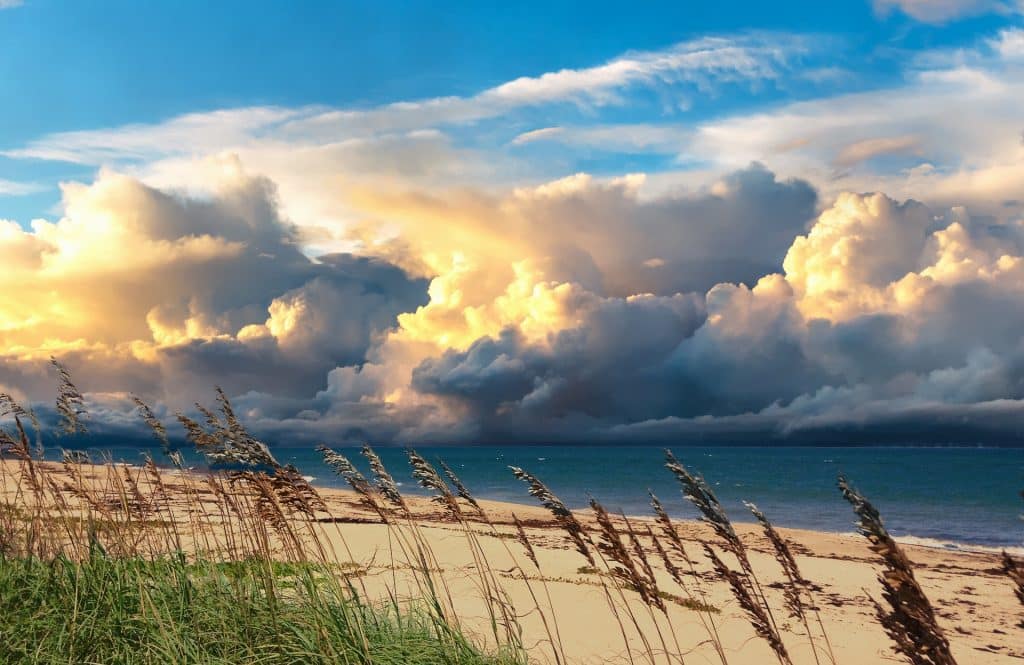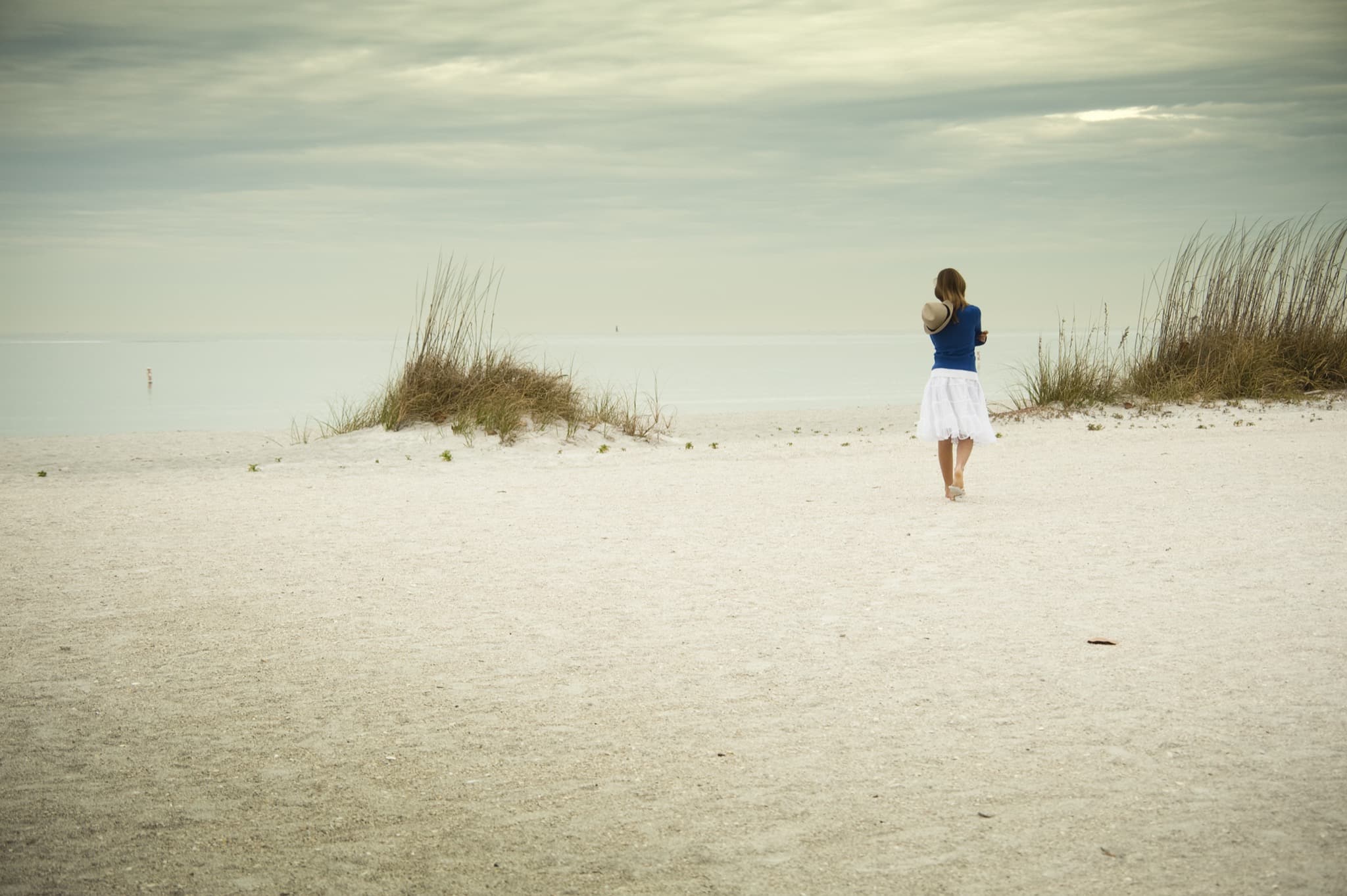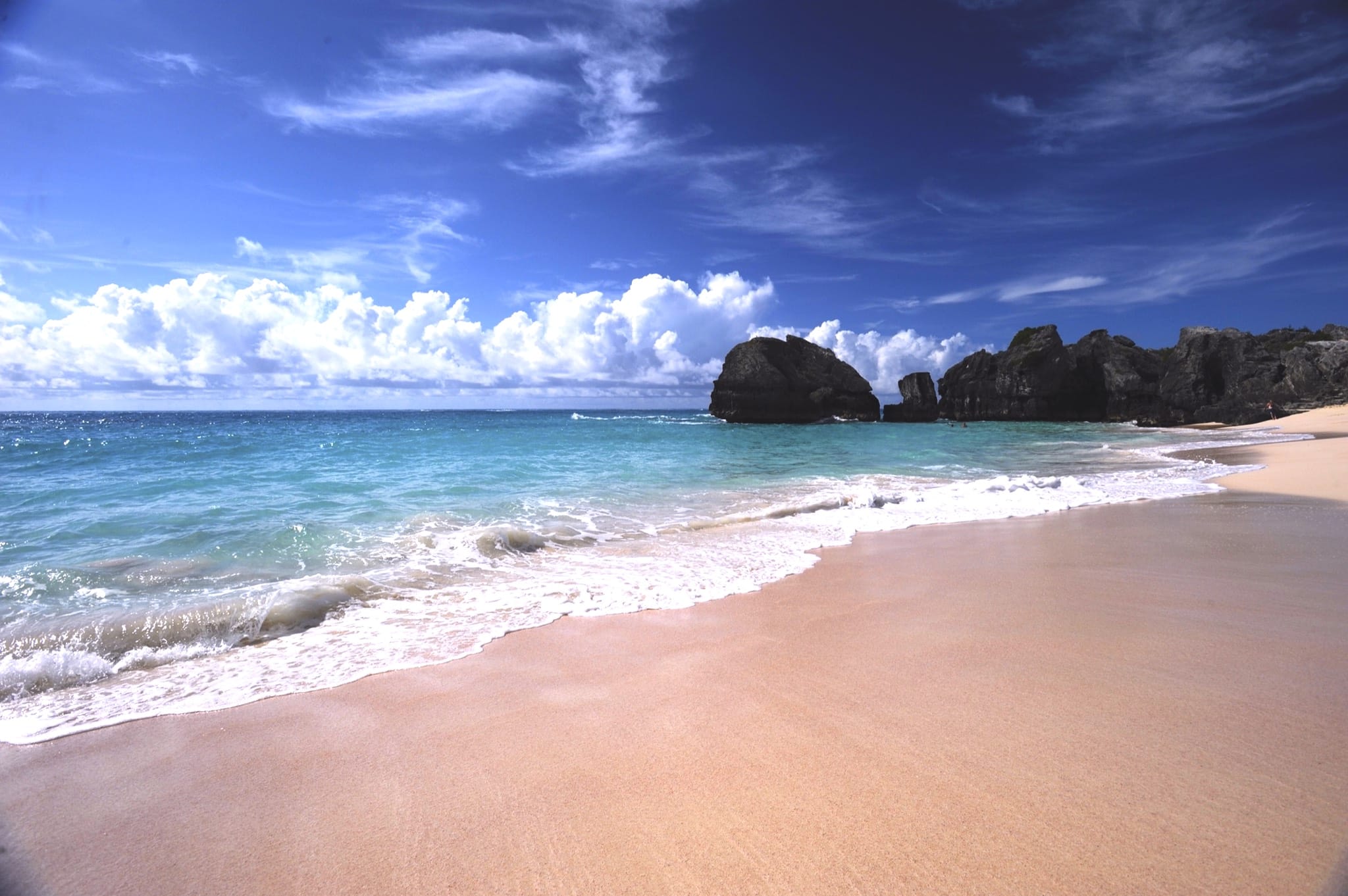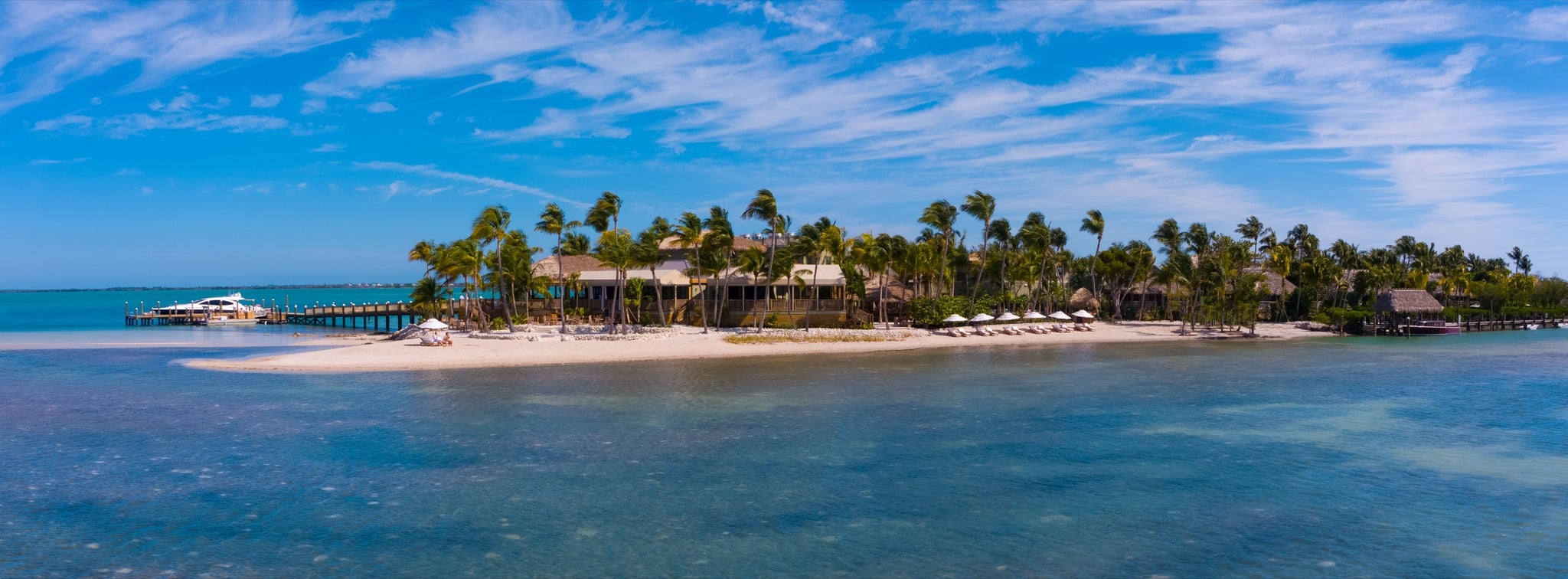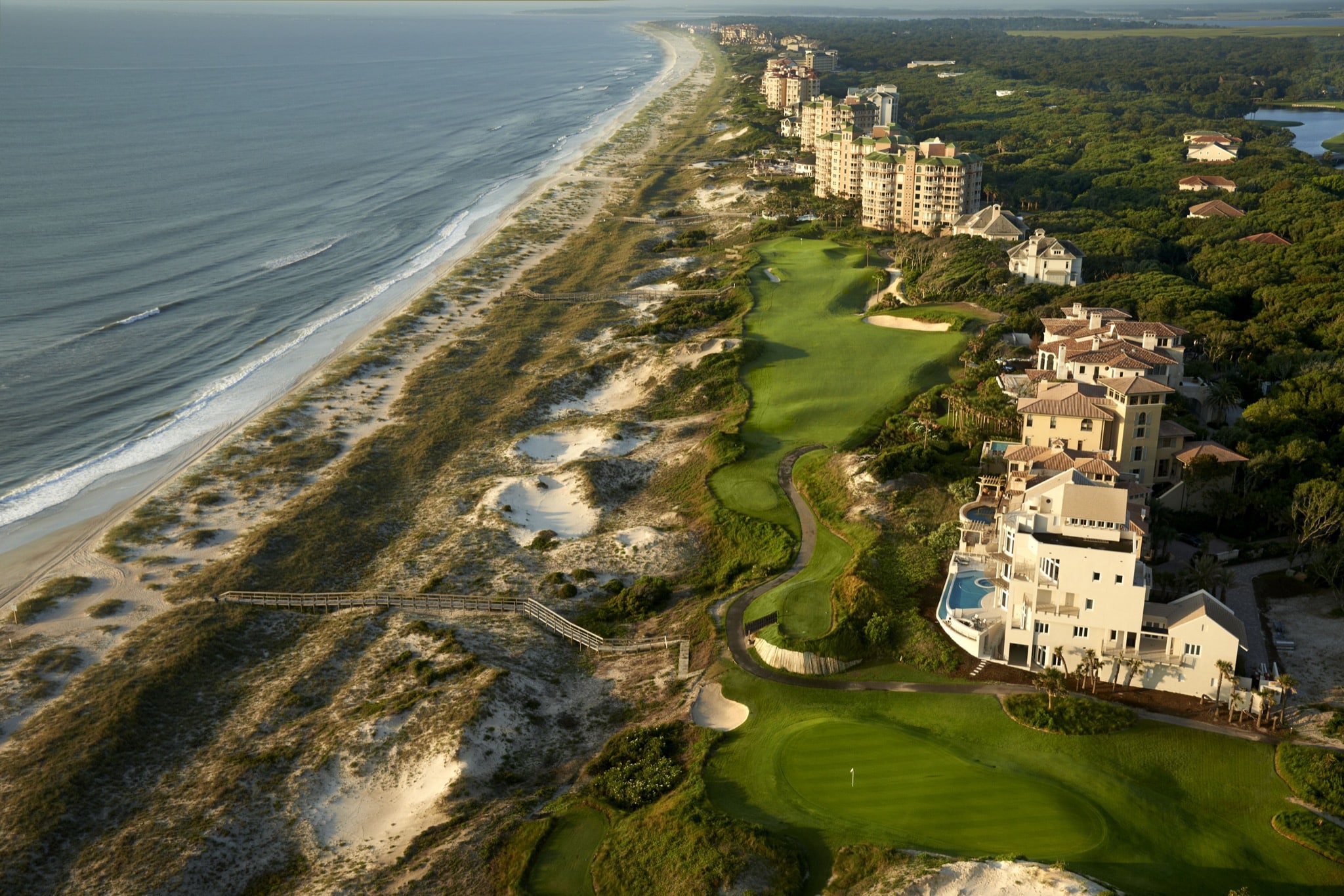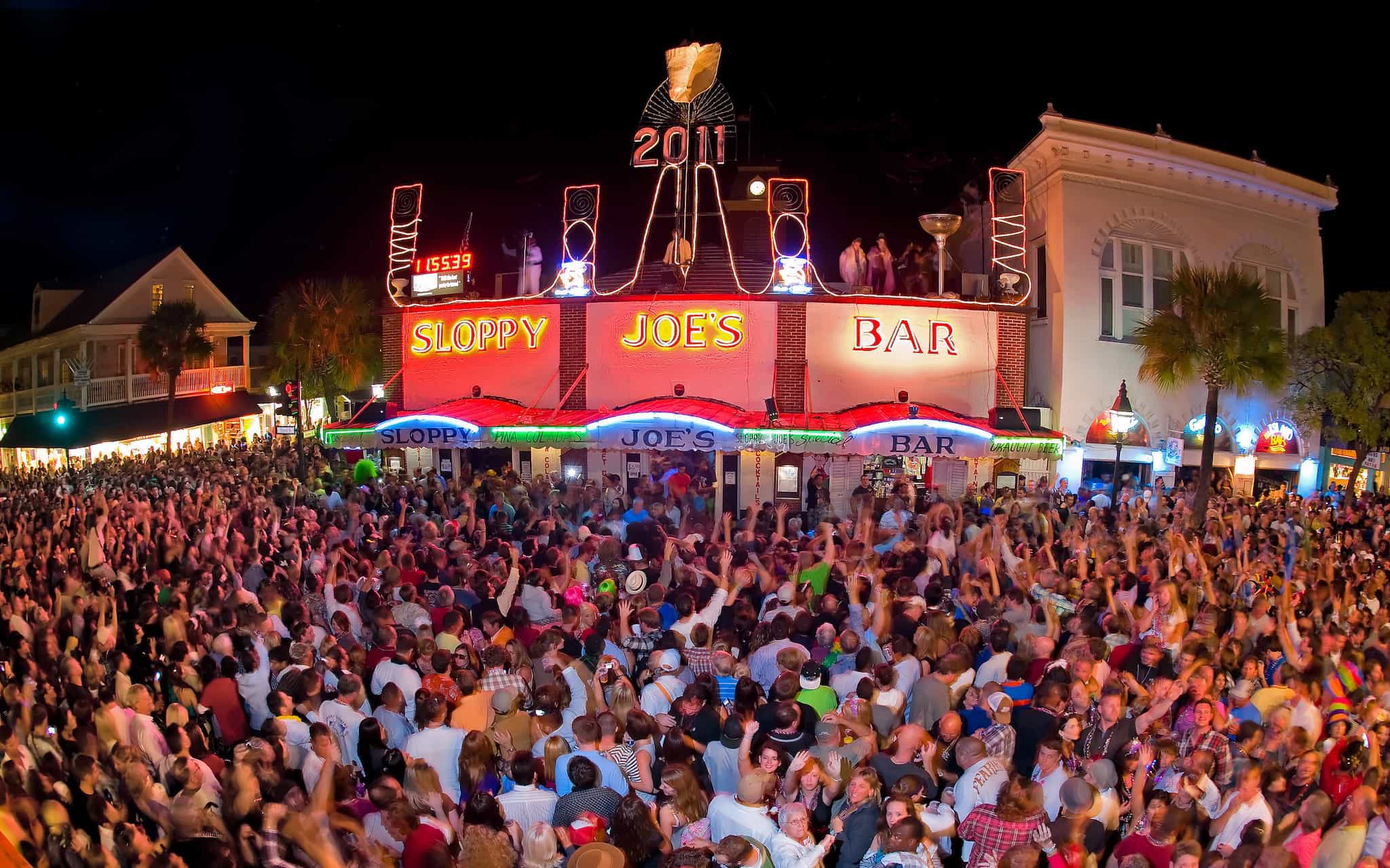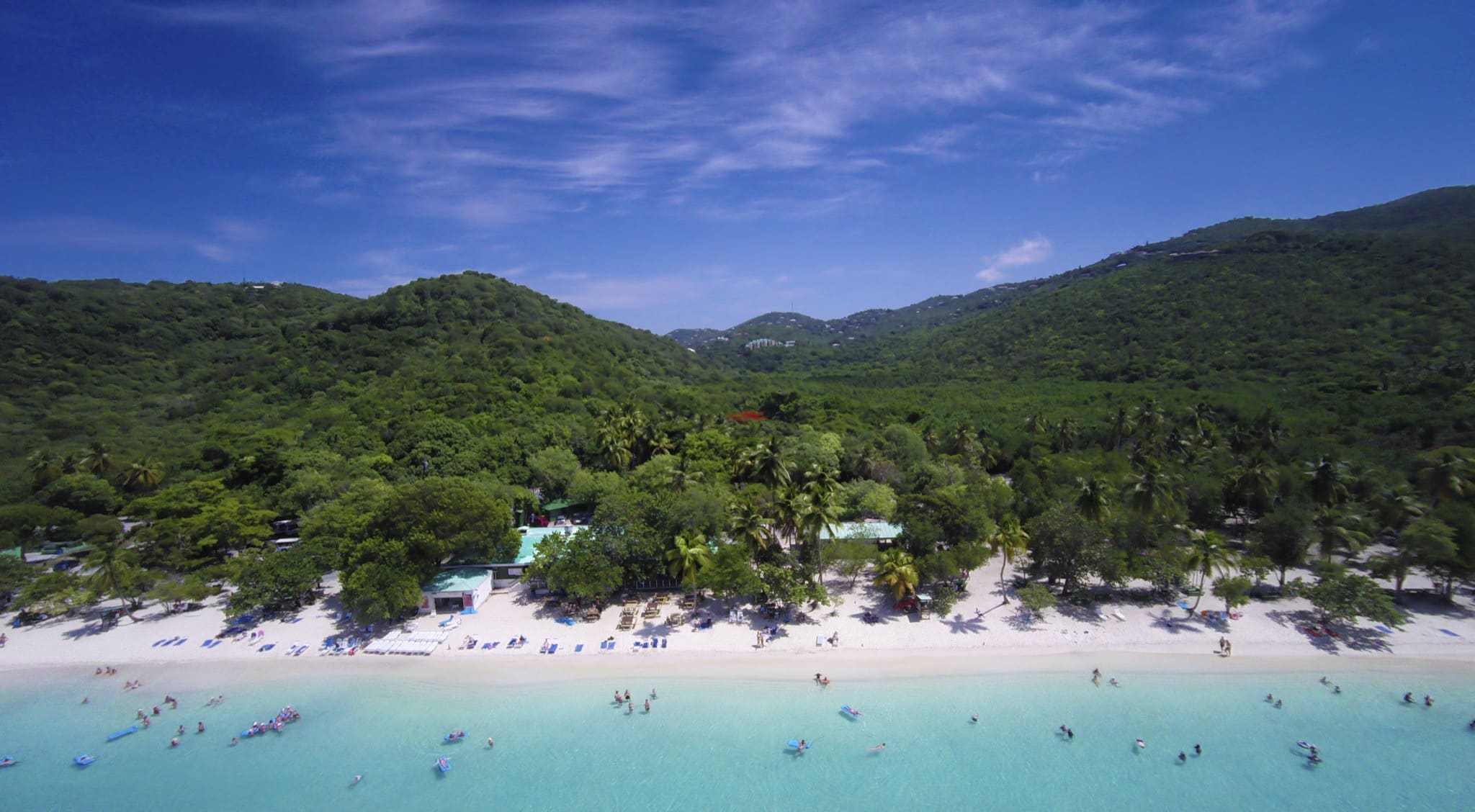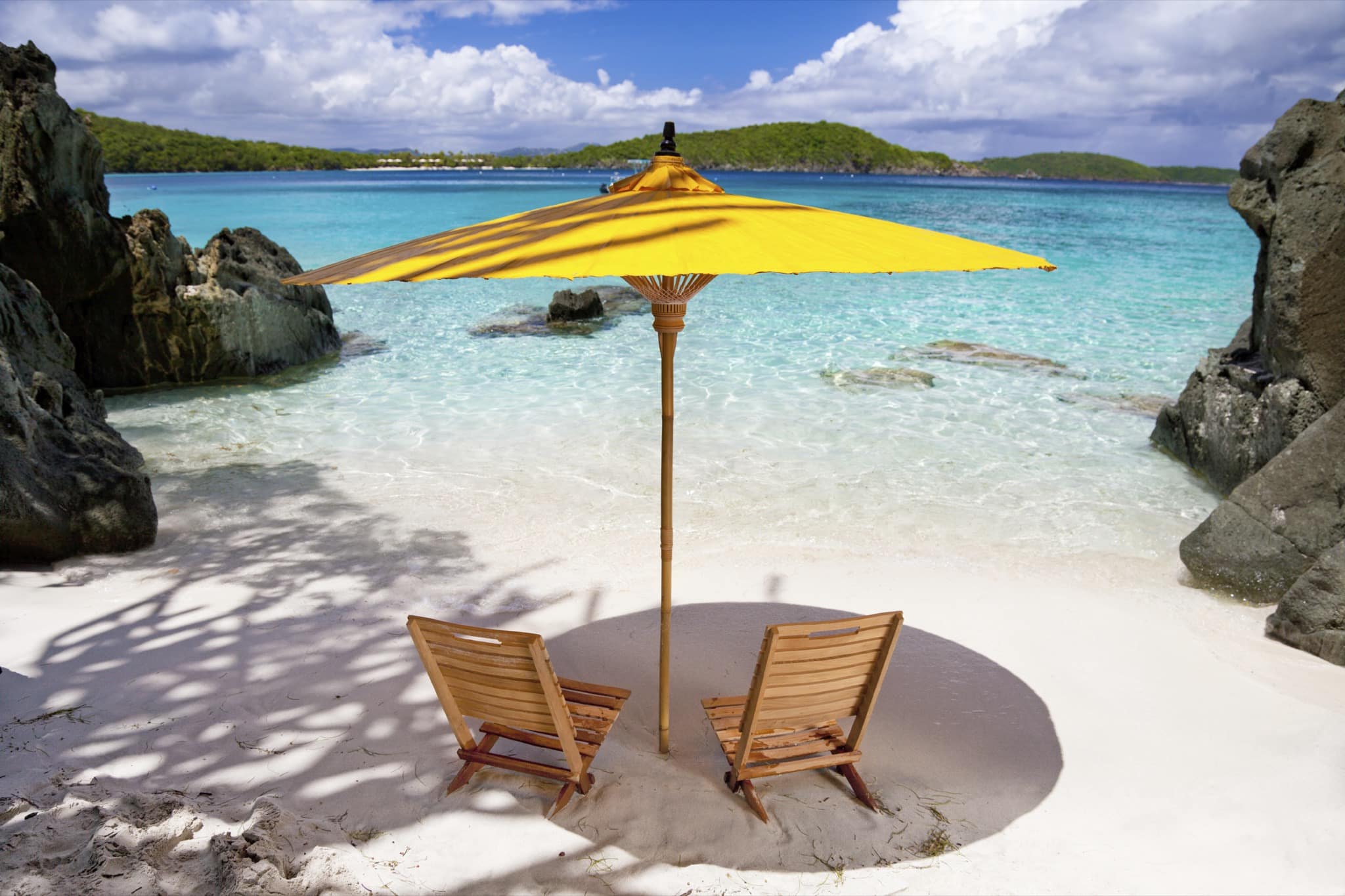Florida is surrounded by some of the most popular beaches in the world. But it’s still possible to find an empty stretch of sand. The key is timing. Early mornings are prime, as are those moments right after a summer thunderstorm when the air is still moist from tropical rains. This shot of a beach in Clearwater was taken after a rain shower before the crowds appeared.
Daytona Beach
Long a favorite with spring breakers and surfers, it’s rare to find this beach empty, but not impossible. Set the alarm for an early awakening, and you may be rewarded with that first glimpse of the sun peaking around the clouds, long before the crowds arrive. The beach is popular and known for its wide, smooth sand. These hard-packed white granules allow for beach driving which is a draw for some. Home to the Daytona International Speedway, the town hosts several events including the Daytona 500 every spring. The beach town is also famous for an assortment of seafood eateries and craft beer spots.
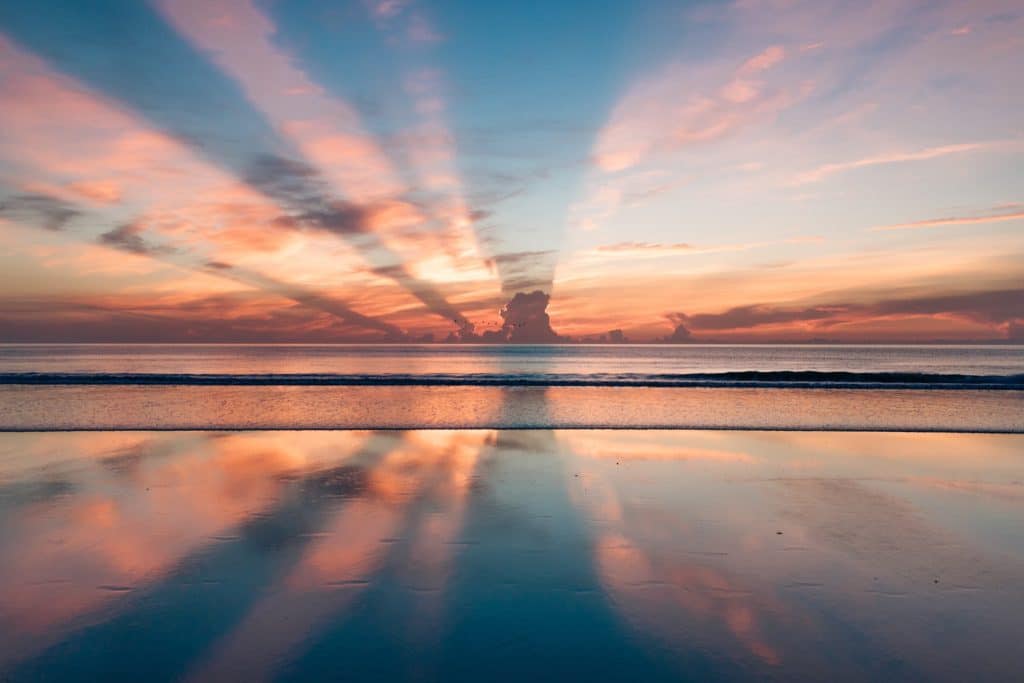
Key West
The Keys are not known for their beaches, but Key West does have several sandy shores. Here too, the key to solitude is getting there early, which is a rare habit for residents of a town known for its late-hour nightlife. Most people head to Smathers Beach where a long expansive stretch of sand makes it the largest public beach in Key West. Palm trees line the beach, and a grassy area fronts the sand from the street. Out on the water active groups head out for kayaking, paddleboarding and windsurfing. Sitting overlooking the water toward Cuba, the spot is known for spectacular sunsets.
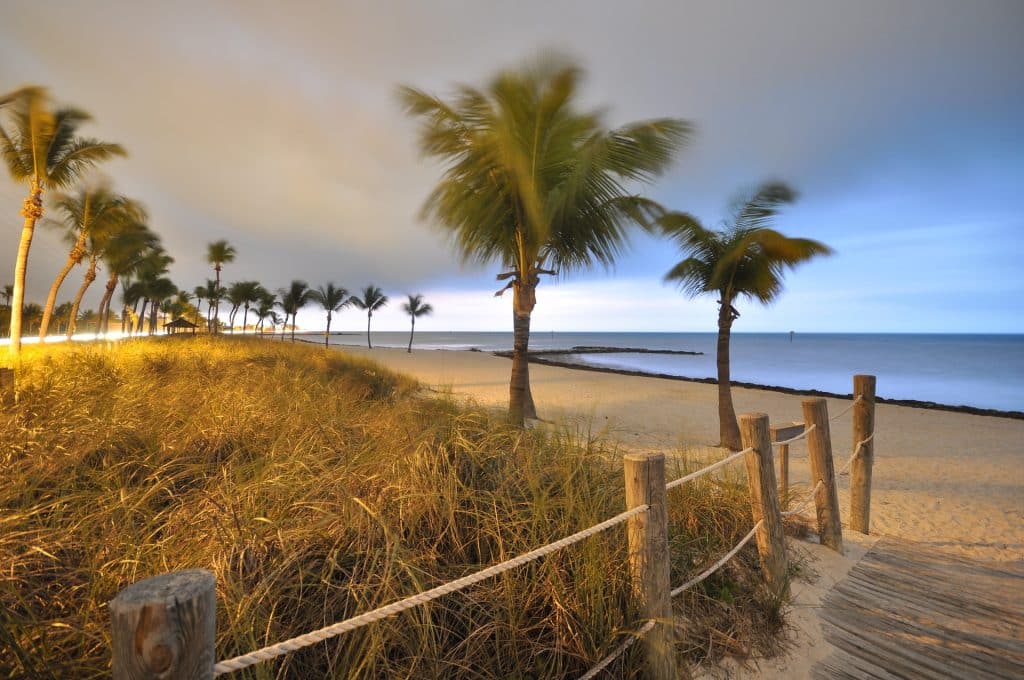
Naples
To get away from it all in the Gulf Coast town of Naples, shake off your shoes and take a walk in the sand. The farther you get from a beach access lot, the better the chance of shedding other humans, and keeping company with the sea birds. With 9 miles of pristine beaches to explore, you’re bound to find a quiet spot. Don’t pass up a visit to the Naples Pier, an iconic landmark that juts out 1,000 feet into the sea. From the wooden deck, there’s a chance of dolphin and stingray sightings in spring and early summer.
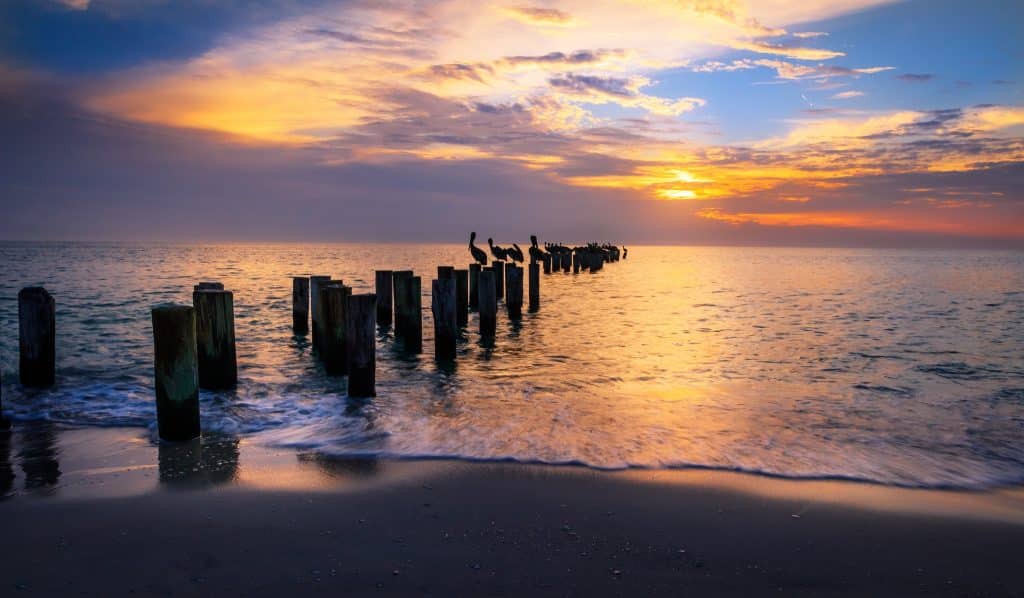
Pensacola
On Florida’s northern Gulf Coast, the barrier islands of the Gulf Island National Seashore combine powder-fine white sands with emerald waters. With miles of beach to explore, there’s a good chance of creating your own space. Pensacola Beach is found on the barrier island of Santa Rosa and is included in the national seashore. Pensacola Beach is famous for its boardwalk that is lined with shops, eateries and bars. Beyond the activity, the area is blessed with more than 300 species of birds, and many are seen from the Great Florida Birding and Wildlife Trail, of which the area boasts 10 sites of meandering wooden walkways that pass over lagoons and mangroves.
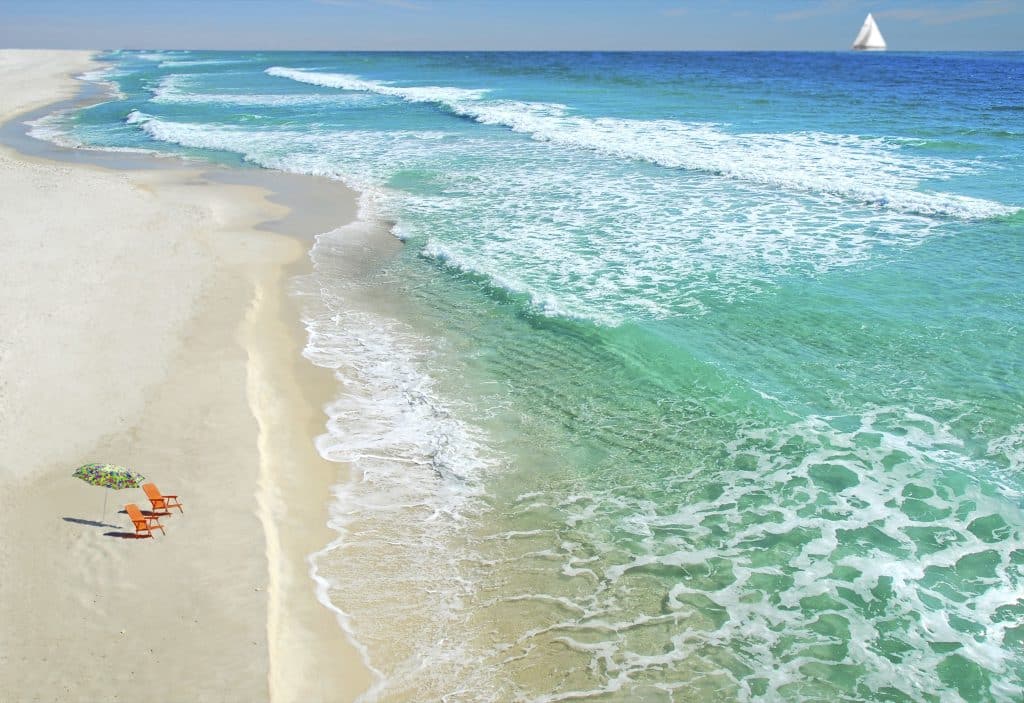
Sanibel Island
Thanks to an east-west orientation, the beaches of Sanibel Island create a landing zone for seashells. Collectors make prized finds here on a regular basis, and it’s best to arrive early to begin the daily hunt for newly deposited treasures. In addition to shells, the area is popular for picnics and biking at Lighthouse Beach Park. The wildlife refuge at J.N. Ding Darling National Wildlife Refuge is a 7,600-acre natural setting home to birds, reptiles and mammals. Paddle through the mangroves, bike the four-mile scenic trail or climb an observation tower for a bird’s eye view. Nearby beaches include Captiva Island and Cayo Costa, a sea turtle nesting area.
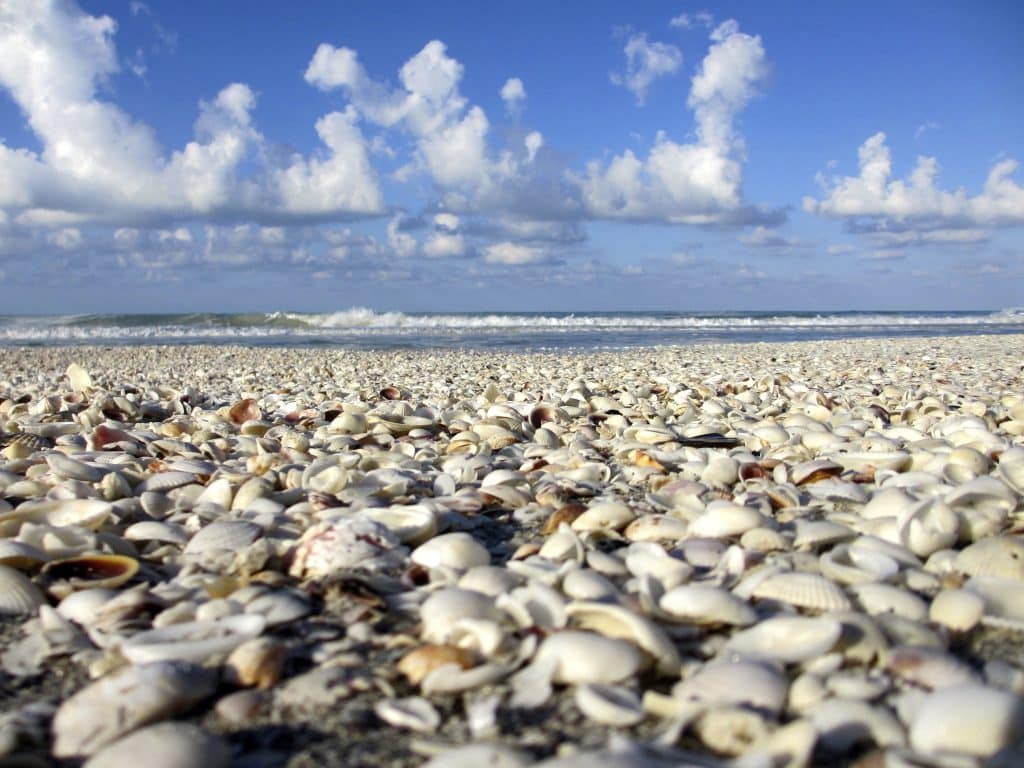
St. Augustine
This north Florida city boasts 42 miles of beaches, from the pristine coast of Ponte Vedra Beach to St. Augustine Beach’s lively surf and south to the wide sands of Crescent Beach named for its natural crescent moon shape located on Anastasia Island. Here the white quartz sand is a draw for beach walkers, especially the north three miles where you might think the place is all yours as the houses are hidden behind mounds of dunes. St. Augustine Beach draws fishermen seeking tarpon and king mackerel to its wooden pier and hungry beachgoers head to its beachside restaurants. Here you’ll find plenty of real estate to call your own.

Vero Beach
Afternoon thunderclouds hover over the Atlantic along the 26 miles of beaches that make up Vero Beach, home to some of the last stretches of undeveloped coastline on Florida’s east coast. Walk these shores and you’re likely to meet more pelicans, sandpipers, and turtles than humans. To the north is Sebastian Inlet where the Atlantic Ocean swells create ideal surfing conditions making it one of Florida’s premier surfing spots. Wildlife preserves offer plenty of opportunities for birders, nature lovers and outdoor photographers. Pelican Island National Wildlife Refuge is a little island in the Indian River Lagoon where a 3-mile loop of trails meanders through the salt marsh.
